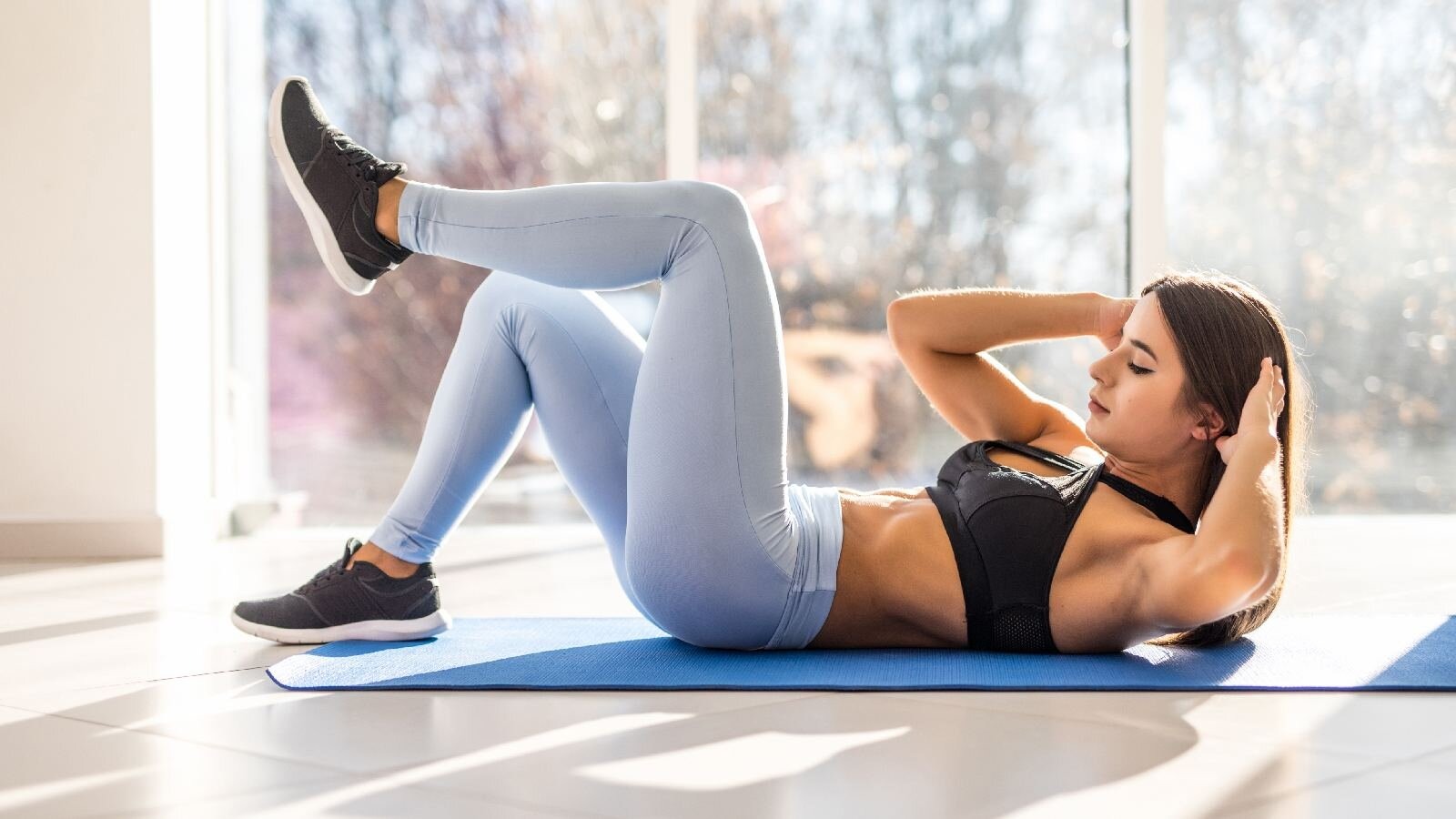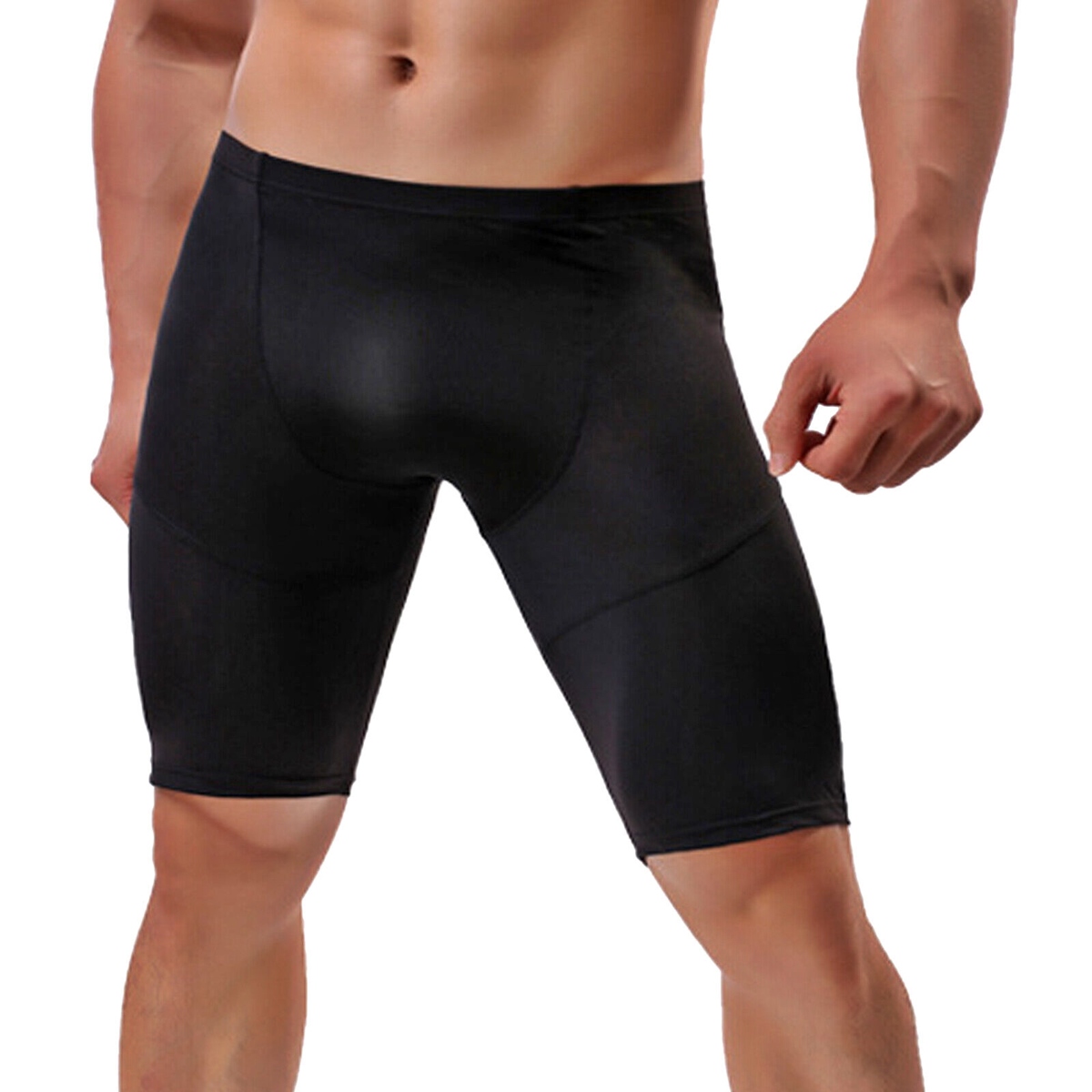

Featured
How To Get A Small Waist Exercise
Published: September 28, 2023
Learn the best exercises to get a small waist! Follow our featured workout routine and achieve your dream hourglass figure in no time.
Introduction
Welcome to the world of waist-shrinking exercises! If you’re looking to achieve a small waist and enhance your overall fitness, you’ve come to the right place. A narrow waist not only enhances your physical appearance, but it also has numerous health benefits. A strong core and a smaller waist can improve your posture, reduce the risk of lower back pain, and enhance your performance in various activities.
In this article, we will explore different exercises and techniques that can help you achieve a small waist. We will delve into the importance of a toned midsection, guide you through effective workouts, and provide tips on incorporating healthy eating habits to maximize your results. So, let’s get started on your journey to a smaller waist!
Before we jump into the exercises, it is crucial to understand that spot reduction, or reducing fat in a specific area of the body, is a myth. Losing weight and reducing waist size requires a combination of targeted exercises, cardiovascular activities, and a healthy diet.
Remember, achieving a small waist takes time, patience, and commitment. There are no quick fixes or magic solutions. However, by following the right exercises and incorporating them into your routine, you can start seeing results over time.
Now, let’s dive into the world of waist-shrinking exercises and discover the secrets to achieving a small waist!
Understanding the Importance of a Small Waist
A small waist is not just about achieving an appealing hourglass figure; it has significant health benefits as well. Your waist measurement is an essential indicator of your overall health and fitness level. Here are a few reasons why having a small waist is important:
- Better Posture: A strong and toned core, including the muscles around your waist, helps maintain proper alignment and posture. This can prevent back pain and improve your overall spinal health.
- Reduced Risk of Chronic Diseases: Excess fat around the waist, also known as visceral fat, can increase the risk of developing chronic diseases such as heart disease, type 2 diabetes, and certain types of cancer. By reducing your waist size, you can lower the risk of these health conditions.
- Improved Athletic Performance: Whether you’re an athlete or a fitness enthusiast, a strong and small waist contributes to better performance in sports and physical activities. It enhances your stability, balance, and agility, allowing you to move efficiently and with more control.
- Boosted Confidence: Let’s not underestimate the psychological benefits of having a small waist. Feeling confident in your body can improve your self-esteem and overall well-being.
It’s important to note that everyone’s body is unique, and there is no universally “ideal” waist size. Factors such as genetics, body type, and overall body composition can influence what is considered a small waist for you. Instead of focusing on achieving a specific number, aim for a waist size that is proportionate to your body and promotes good health.
Now that you understand the importance of a small waist, it’s time to explore the exercises and techniques that can help you achieve your goal. Let’s move on to the next section and prepare for waist-shrinking workouts!
Getting Started: Preparing for Waist-shrinking Exercises
Before diving into waist-shrinking exercises, it’s crucial to prepare yourself physically and mentally. Here are a few steps to help you get started:
- Evaluate your current fitness level: Assess your current fitness level to determine where you stand. Consider factors such as strength, flexibility, and endurance. This will help you choose the right exercises and progress at an appropriate pace.
- Consult with a healthcare professional: If you have any health concerns or underlying medical conditions, it’s important to consult with a healthcare professional before starting any new exercise routine. They can provide guidance tailored to your specific needs.
- Set realistic goals: Define clear and achievable goals for yourself. Whether you want to lose inches off your waist or simply strengthen your core, having specific goals will help you stay focused and motivated.
- Create a workout plan: Design a well-rounded workout plan that includes a combination of waist-shrinking exercises, core strengthening exercises, and cardiovascular activities. Make sure to include rest days for recovery.
- Warm up and cool down: Before and after each workout session, spend a few minutes warming up and cooling down. This helps prepare your body for exercise and aids in preventing injuries.
- Invest in proper workout attire: Wearing comfortable and supportive clothing during your workouts is essential for optimal performance. Invest in workout clothes that allow for unrestricted movement and proper ventilation.
- Stay hydrated: Hydration is crucial for overall health and exercise performance. Keep a water bottle handy during your workouts and make sure to drink water throughout the day.
- Listen to your body: Pay attention to any discomfort or pain during exercise. It’s normal to feel some muscle soreness, but if something doesn’t feel right, modify the exercise or seek professional guidance.
By following these steps and preparing yourself adequately, you’ll be ready to embark on the journey towards a smaller waist. In the next section, we will explore specific exercises that can help cinch your waist and strengthen your core. Let’s get ready to sweat!
Exercise 1: Waist Cinching Workouts
When it comes to achieving a small waist, specific exercises targeting the abdominal and oblique muscles are key. These workouts focus on cinching the waistline and toning the muscles in that area. Here are some effective exercises you can incorporate into your routine:
- Plank: Start by getting into a push-up position, with your forearms resting on the ground and your elbows directly beneath your shoulders. Engage your core muscles and hold this position for 30-60 seconds. Repeat for multiple sets, gradually increasing the duration as your core strength improves. Planks engage your entire core, including the muscles around your waist and lower back.
- Side Plank: Lie on your side with one forearm on the ground and your elbow directly below your shoulder. Stack your feet on top of each other or stagger them for extra stability. Lift your hips off the ground, creating a straight line from your head to your heels. Hold this position for 30-60 seconds on each side. Side planks primarily target the oblique muscles, helping to cinch and sculpt your waist.
- Russian Twists: Sit on the ground with your knees bent and your feet flat on the floor. Lean back slightly, keeping your back straight and your core engaged. Hold a weighted object, such as a dumbbell or a medicine ball, in front of your chest. Twist your torso to one side, bringing the weighted object to touch the ground near your hip. Return to the center and repeat on the other side. Perform 10-15 repetitions on each side for multiple sets. Russian twists strengthen your obliques and help define your waistline.
- Bicycle Crunches: Lie on your back with your knees bent and your hands behind your head. Lift your shoulder blades off the ground and engage your core muscles. Bring your left knee towards your chest while simultaneously twisting your torso and bringing your right elbow towards your left knee. Straighten your left leg while bringing your right knee towards your chest and touching it with your left elbow. Alternate back and forth in a bicycle-pedaling motion while keeping your core muscles engaged. Aim for 10-15 repetitions on each side for multiple sets. Bicycle crunches target both the rectus abdominis and the oblique muscles.
- Waist Circles: Stand with your feet shoulder-width apart and place your hands on your waist. Slowly rotate your hips in a circular motion, making small circles in one direction for 10-15 reps, then switch directions. Waist circles help improve flexibility and strengthen the muscles around your waist.
Remember to maintain proper form and technique while performing these exercises. Start with a weight or intensity level that challenges you but allows you to execute the movements correctly. As you progress, you can increase the difficulty by adding weights or extending the duration of each exercise.
Pair these waist cinching workouts with targeted core exercises and cardiovascular activities for a comprehensive fitness routine. In the next section, we will explore core strengthening exercises that will further contribute to achieving a small waist. Get ready to strengthen those abs!
Exercise 2: Core Strengthening Exercises
Building core strength is essential for achieving a small waist and overall stability. Strengthening the muscles in your core not only helps you achieve a toned midsection but also improves your posture and supports your back. Here are some core strengthening exercises to incorporate into your routine:
- Crunches: Lie on your back with your knees bent and your feet flat on the floor. Place your hands behind your head or crossed on your chest. Lift your shoulder blades off the ground, contracting your abdominal muscles, and lower back down. Aim for 15-20 repetitions for multiple sets. Crunches mainly target the rectus abdominis, the front muscles of the abdomen.
- Reverse Crunches: Lie on your back with your legs extended vertically towards the ceiling. Place your hands by your sides or under your glutes for support. Engage your core muscles and lift your hips off the ground, bringing your knees towards your chest. Slowly lower your hips back down without touching the ground and repeat for 10-15 repetitions for multiple sets. Reverse crunches primarily engage the lower abdominals.
- Plank with Leg Lifts: Get into a plank position, with your forearms resting on the ground and your body in a straight line. Engage your core and lift one leg as high as you can without compromising your form. Hold for a few seconds and lower the leg. Repeat on the other side. Aim for 10-15 lifts on each side for multiple sets. Plank with leg lifts engages your rectus abdominis, obliques, and hip stabilizer muscles.
- Mountain Climbers: Begin in a high plank position with your hands directly under your shoulders. Drive one knee towards your chest while keeping the other leg extended. Quickly alternate your legs in a running motion, as if you’re climbing a mountain. Aim for 30-60 seconds of continuous movement. Mountain climbers engage your core, shoulders, and leg muscles, providing a full-body workout.
- Superman Pose: Lie face down on the ground with your arms extended in front of you and your legs straight. Lift your chest, arms, and legs off the ground simultaneously, keeping your neck in a neutral position. Hold the pose for a few seconds and lower your body back down. Aim for 10-15 repetitions for multiple sets. The superman pose strengthens your lower back muscles, as well as your glutes and hamstrings.
Remember to maintain proper form and engage your core muscles throughout each exercise. As with any workout routine, start with a level of intensity that challenges you without compromising your form. Gradually increase the difficulty as your core strength improves.
While core exercises are important, it’s crucial to combine them with waist-shrinking workouts and cardiovascular activities for overall fitness. In the next section, we will explore how cardiovascular exercises can contribute to achieving a small waist. Get ready to get your heart pumping!
Exercise 3: Cardiovascular Exercises for a Small Waist
Cardiovascular exercises play a crucial role in burning calories and shedding excess fat, including the fat around your waist. Incorporating regular cardio workouts into your routine not only helps trim your waistline but also improves heart health and boosts overall fitness levels. Here are some effective cardiovascular exercises to help you achieve a smaller waist:
- Running or Jogging: Running or jogging is a great way to elevate your heart rate and burn calories. Whether you prefer to run outdoors or on a treadmill, aim for at least 20-30 minutes of continuous running or jogging. Start at a comfortable pace and gradually increase your speed and intensity over time.
- Cycling: Cycling is a low-impact cardiovascular exercise that targets the lower body muscles while providing an excellent workout for the heart and lungs. Whether you hop on a stationary bike or hit the trails with a bicycle, aim for 30-45 minutes of continuous cycling. Adjust the resistance or terrain to challenge yourself as you build endurance.
- Jumping Rope: Jumping rope is a fun and effective way to get your heart rate up and burn calories. It also engages multiple muscle groups, including the core and lower body. Start with short intervals and gradually increase your duration as you build stamina. Aim for 5-10 minutes of jumping rope as a warm-up or as a standalone cardio routine.
- Dancing: Dancing is a fantastic way to improve cardiovascular fitness while having fun. Choose a dance style that gets you moving and grooving, such as Zumba, hip-hop, or salsa. Follow along with online dance tutorials or join a dance class. Aim for 30-45 minutes of continuous dancing to get your heart pumping and your waistline shrinking.
- Swimming: Swimming is a low-impact, full-body workout that engages multiple muscle groups, including the core. It is not only refreshing but also a great way to burn calories and improve cardiovascular fitness. Whether you swim laps, do water aerobics, or engage in other water-based activities, aim for 30-45 minutes of continuous swimming to reap the benefits.
Remember to choose cardiovascular exercises that you enjoy, as this will increase your motivation to stick with your routine. Additionally, varying your workouts and incorporating different exercises will prevent boredom and challenge your body in new ways.
It’s important to find a balance between waist-shrinking exercises, core strengthening exercises, and cardiovascular activities. Combine these different types of exercises to achieve optimal results and a smaller waist. In the next section, we will explore the importance of incorporating healthy eating habits into your fitness journey. Get ready to nourish your body for success!
Incorporating Healthy Eating Habits for Optimal Results
When it comes to achieving a small waist, exercise alone is not enough. Healthy eating habits play a crucial role in supporting your fitness goals and optimizing your results. Here are some tips to help you incorporate healthy eating into your waist-shrinking journey:
- Eat a balanced diet: Focus on consuming a balanced mix of lean proteins, whole grains, fruits, vegetables, and healthy fats. These provide essential nutrients and fiber while keeping you feeling satisfied and energized throughout the day.
- Control portion sizes: Pay attention to portion sizes to avoid overeating. Use smaller plates and bowls to help with portion control, and listen to your body’s hunger and fullness cues.
- Avoid processed foods: Minimize your intake of processed and packaged foods, as they are often high in added sugars, unhealthy fats, and empty calories. Opt for whole, unprocessed foods whenever possible.
- Stay hydrated: Drink plenty of water throughout the day to stay hydrated and help regulate your appetite. Water can also boost your metabolism and aid in digestion, contributing to your overall fitness goals.
- Include lean proteins: Incorporate lean protein sources such as chicken, turkey, fish, eggs, legumes, and tofu into your meals. Protein helps build and repair muscle tissue and keeps you feeling fuller for longer.
- Choose complex carbohydrates: Opt for complex carbohydrates like whole grains, fruits, and vegetables, which provide sustained energy and essential nutrients. Avoid or limit refined carbohydrates, sugary drinks, and processed snacks.
- Moderate your intake of fats: Include healthy fats in your diet, such as avocados, nuts, seeds, olive oil, and fatty fish like salmon. These fats provide important nutrients and help with satiety.
- Practice mindful eating: Slow down and pay attention to your food while eating. This allows you to savor your meals, recognize feelings of fullness, and make conscious choices about what and how much you eat.
- Avoid excessive alcohol consumption: While the occasional drink is fine, excessive alcohol intake can contribute to weight gain, particularly around the waist. If you do consume alcohol, do so in moderation.
Remember, creating sustainable and healthy eating habits is a long-term commitment. Aim for consistency rather than perfection, and make gradual changes that you can maintain over time. When combined with regular exercise, a balanced and nutritious diet will support your efforts to achieve a smaller waist and improve your overall health.
In the next section, we will share some tips and tricks to help you stay on track and maximize your waist-shrinking journey. Stay tuned!
Tips and Tricks for Achieving a Small Waist
As you embark on your journey to achieving a small waist, it’s helpful to have some tips and tricks in your arsenal. These strategies can provide guidance, support, and motivation along the way. Here are some tips to help you get started and stay on track:
- Stay consistent: Consistency is key when it comes to achieving any fitness goal. Stick to your exercise routine and healthy eating habits, even when motivation levels are low. Remember that progress takes time.
- Set realistic goals: Set achievable and measurable goals that align with your abilities and lifestyle. Having specific targets will help you stay focused and motivated throughout your journey.
- Stay motivated: Find what motivates you and use it to your advantage. Whether it’s listening to uplifting music, tracking your progress, or working out with a buddy, incorporating sources of motivation will keep you on track.
- Vary your workouts: Keep your workouts interesting by incorporating a variety of exercises and activities. This not only prevents boredom but also challenges your muscles in different ways, leading to better results.
- Stay accountable: Find an accountability partner or join a fitness community where you can share your progress and challenges. Having someone to lean on, celebrate successes, and provide support can make a big difference in staying committed.
- Listen to your body: Pay attention to your body’s cues and adjust your workouts accordingly. Rest when needed, modify exercises if necessary, and seek professional guidance if you experience any pain or discomfort.
- Stay hydrated: Hydration is essential for overall health and optimal exercise performance. Drink plenty of water throughout the day, especially before, during, and after workouts.
- Get enough rest: Adequate rest and sleep are crucial for recovery and muscle growth. Aim for 7-8 hours of quality sleep each night to support your fitness goals.
- Stay positive: Maintaining a positive mindset is key to long-term success. Embrace the journey, celebrate your progress (no matter how small), and remember that setbacks are temporary. Believe in yourself, and you’ll be amazed at what you can achieve.
- Seek professional guidance: If you’re unsure about proper form, technique, or how to structure your fitness routine, consider consulting with a personal trainer or fitness professional. They can provide personalized guidance and ensure you’re on the right track.
Remember, the path to a small waist is unique to each individual. Find what works best for you and be patient with the process. With dedication, consistency, and the right mindset, you can achieve your goal of a smaller waist.
In the next section, we will discuss common mistakes to avoid on your waist-shrinking journey. Understanding these pitfalls will help you navigate your fitness routine more effectively. Let’s dive in!
Common Mistakes to Avoid
When embarking on your journey to achieve a small waist, it’s important to be aware of common mistakes that can hinder your progress. By avoiding these pitfalls, you can optimize your efforts and maximize your results. Here are some common mistakes to steer clear of:
- Obsessing over spot reduction: Spot reduction, or targeting fat loss in a specific area, is a myth. Instead, focus on overall weight loss and body fat reduction through a combination of targeted exercises, cardiovascular activities, and a healthy diet.
- Overdoing waist-shrinking exercises: While it’s important to incorporate waist-shrinking exercises into your routine, overdoing them can lead to muscle imbalances and potential injuries. Make sure to balance waist exercises with core strengthening exercises and cardiovascular activities for overall fitness.
- Neglecting proper form: Performing exercises with improper form not only reduces their effectiveness but also increases the risk of injury. Take the time to learn and practice proper form for each exercise, and if needed, seek guidance from a professional trainer.
- Relying solely on exercise: Exercise alone is not enough to achieve a small waist. Neglecting nutrition and a healthy eating plan can undermine your progress. Remember that nutrition plays a vital role in achieving your fitness goals.
- Setting unrealistic expectations: Rapid and extreme changes to your body are not sustainable. Setting unrealistic expectations can lead to frustration and give up quickly. Instead, focus on gradual progress and long-term sustainable changes.
- Comparing yourself to others: Everyone’s body is unique, and progress can vary from person to person. Comparing yourself to others can be demotivating and undermine your self-confidence. Focus on your own journey and celebrate your own achievements.
- Ignoring rest and recovery: Rest and recovery are essential for muscle repair and growth. Overtraining can lead to burnout and injuries. Make sure to incorporate rest days into your routine and prioritize quality sleep.
- Skipping warm-up and cool-down: Neglecting to warm up before a workout and cool down afterward increases the risk of injury. Take the time to properly warm up your muscles and prepare your body for exercise, as well as cool down to gradually decrease your heart rate and stretch your muscles.
- Getting discouraged by setbacks: Setbacks are a natural part of any fitness journey. Don’t let a setback derail your progress or discourage you. Embrace it as an opportunity to learn and grow, and keep pushing forward.
- Making excuses: Excuses can hinder your progress and prevent you from achieving your goals. Take responsibility for your actions and commit to making positive changes for yourself.
By avoiding these common mistakes, you can stay on track and make steady progress towards achieving a smaller waist. Remember, this journey is about progress, not perfection. Be patient, stay consistent, and celebrate every milestone along the way.
In the next section, we will discuss progress tracking and the importance of patience in your waist-shrinking journey. Let’s keep pushing forward!
Progress Tracking and Patience
Tracking your progress and practicing patience are essential components of a successful waist-shrinking journey. The path to achieving a smaller waist takes time and requires consistent effort. Here’s why progress tracking and patience are crucial:
Progress Tracking:
Keeping track of your progress allows you to objectively measure your results and see how far you’ve come. Here are a few ways to track your progress:
- Measurements: Take regular measurements of your waistline to track changes in size. Use a flexible tape measure and measure around the smallest part of your waist.
- Photos: Capture weekly or monthly progress photos to visually compare how your waistline is transforming over time. Be sure to take photos from the same angles and under the same lighting conditions for accurate comparisons.
- Strength and endurance: Monitor improvements in your strength and endurance during exercises such as planks, crunches, and other waist-shrinking workouts. Note how long you can hold a plank or how many repetitions you can perform, and track your progress as these numbers increase.
- Energy levels and overall fitness: Pay attention to how your energy levels improve, how you feel during workouts, and how your overall fitness level progresses. Notice increases in stamina, improved recovery, and an overall sense of well-being.
By regularly tracking your progress, you can stay motivated and see tangible evidence of your hard work paying off.
Patience:
Patience is key when it comes to achieving a smaller waist. Remember that everyone’s body is different, and results will vary. Here’s why patience is essential:
- Realistic expectations: Understand that achieving significant changes takes time. Set realistic expectations and focus on making sustainable lifestyle changes rather than seeking quick fixes.
- Consistency over time: Consistent effort over a prolonged period is what yields long-term results. Stay committed to your exercise routine and healthy eating habits, even when progress feels slow.
- Plateaus are normal: It’s common to experience plateaus during your journey. These periods of slower progress or no progress at all are normal. Stay consistent and trust the process – your body will continue to adapt and change.
- The importance of sustainability: Rapid changes are often not sustainable or healthy. Embrace gradual progress and focus on long-term sustainability rather than quick results.
Be patient with yourself and appreciate the small victories along the way. Celebrate every milestone, whether it’s fitting into a smaller clothing size or completing a workout you couldn’t do before.
Remember, your waist-shrinking journey is unique to you. Focus on your own progress and trust that as long as you remain consistent and patient, you will achieve your goal of a smaller waist.
In the final section, we will wrap up our discussion and summarize the key points to take away. Keep up the great work!
Conclusion
Congratulations on taking the first steps towards achieving a smaller waist and improving your overall fitness! We’ve explored the importance of a small waist, discussed various exercises to help cinch your waist and strengthen your core, and highlighted the significance of incorporating healthy eating habits into your routine. We’ve also shared tips and tricks, as well as common mistakes to avoid, to help you stay on track and optimize your efforts.
Remember, achieving a small waist is a journey that requires consistency, dedication, and patience. It’s important to set realistic goals, track your progress, and maintain a positive mindset throughout the process. Focus on sustainable changes, both in your exercise routine and in your nutrition habits.
By incorporating waist-shrinking exercises, core strengthening workouts, cardiovascular activities, and a balanced diet, you will be on the path to achieving your desired waistline. Stay motivated, listen to your body, and enjoy the process – the results will follow.
Always remember that your journey is unique to you. Embrace your own progress and celebrate each milestone, no matter how small. Comparison to others is unnecessary and can undermine your self-confidence. Trust in yourself and your abilities, and believe that with persistence, resilience, and the right mindset, you can achieve your goal of a smaller waist.
Now, armed with the knowledge and strategies discussed in this article, it’s time for you to take action. Incorporate these exercises, healthy eating habits, and tips into your daily routine, and stay committed to your goal. Keep pushing forward, stay consistent, and enjoy the transformation happening within your body and mind.
Best of luck on your waist-shrinking journey. Here’s to a healthier, stronger, and smaller waist!





